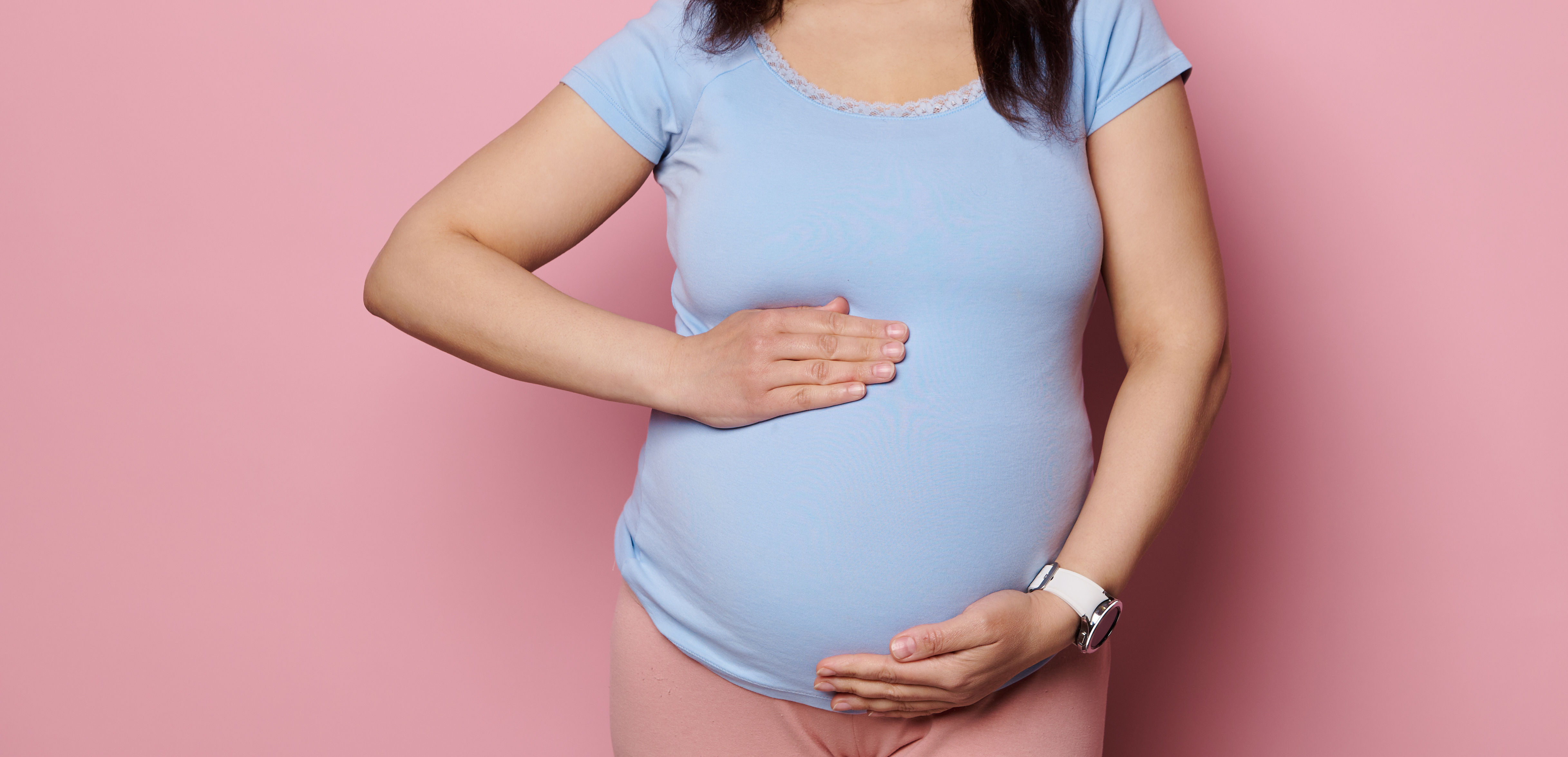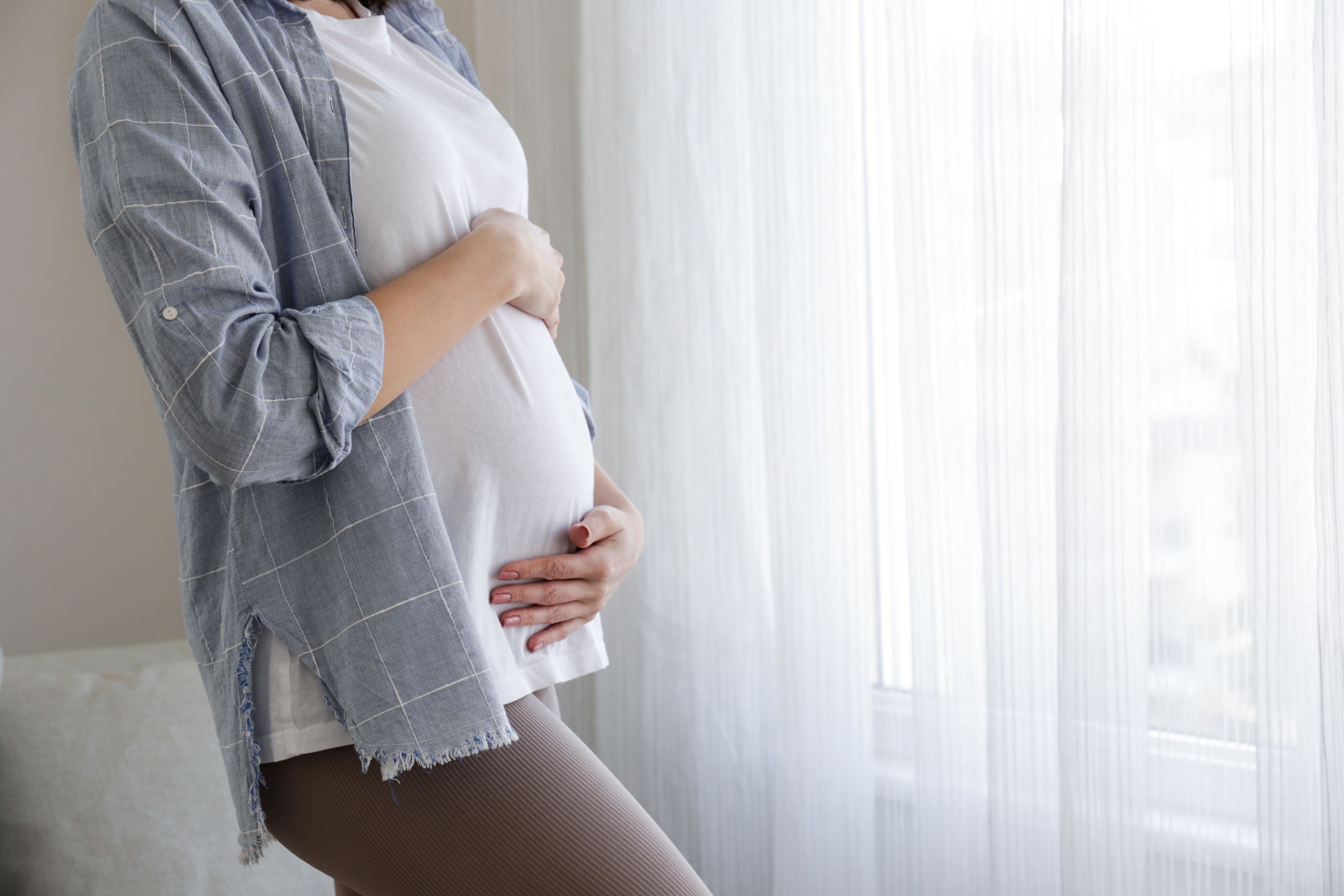
The second trimester (weeks 13-26) is often considered the most enjoyable and comfortable phase for expectant mothers. Learn about weekly changes, including physical and emotional adjustments, fetal growth, and health insights for both you and your baby.
Learn about weekly changes
Second Trimester Guide | Symptoms, Baby Growth & Self-Care Tips
Second Trimester Guide | Symptoms, Baby Growth & Self-Care Tips
Weeks 13–27 of pregnancy explained—learn about baby growth, common symptoms, and how to care for yourself.
Learn about the changes your body goes through in the second trimester.

Learn about the changes your body goes through in the second trimester. Understanding them can help you feel more prepared for this exciting time.
Pelvic Pain
It often arises as the body adjusts to the baby’s growth. Hormonal changes and pressure can cause discomfort around the hips and lower abdomen.
Back Pain
As the uterus expands, it shifts the body’s centre of gravity, adding pressure on the lower back, leading to discomfort and stiffness.
Leg Cramps and Pain
Hormonal changes, weight gain, and circulation changes can lead to painful cramps in the legs, especially at night.
Dizziness
Increased blood flow and fluctuating blood pressure can cause dizziness. It’s common when standing up too quickly or being in a hot environment.
Increased Energy
Many women experience a burst of energy and improved mood as hormone levels stabilise, often making the second trimester feel easier.
Breast Growth and Tenderness
Breasts continue to grow, becoming fuller and possibly more tender, as they prepare for milk production in the coming months.
Skin Changes
Hormone-driven changes can lead to glowing skin, darkened patches, or acne. Increased blood flow often gives a “pregnancy glow.”
Heartburn
The growing uterus presses on the stomach, and hormones relax the oesophageal valve, causing acid reflux and a burning sensation.
Nasal Congestion
Increased blood flow to mucous membranes can lead to swollen nasal passages, causing stuffiness or a mild “pregnancy cold.”
Bleeding Gums
Higher hormone levels increase blood flow to gums, making them more sensitive and prone to bleeding when brushing or flossing.
Black Stool
Iron supplements taken during pregnancy can darken stool colour, which is generally harmless but can be surprising if unexpected.
In your second trimester, your baby grows rapidly - developing essential organs, facial features, and even tiny fingerprints.

Here is what you can expect.
During the second trimester, your body adjusts in noticeable ways.

Expect weight gain, mood swings, mild nausea, and more. Here's a look.
Mood Swings During Pregnancy
Hormonal changes in your second trimester can bring on mood swings, leading to moments of unexpected emotions and heightened sensitivity. Find relaxation techniques that could help you balance these shifts.
Nausea & Vomiting
While nausea often eases by the second trimester, some may still experience it. Small, frequent meals and staying hydrated can help manage symptoms as your body adjusts to the growing baby.
Weight Gain
Steady weight gain in the second trimester supports your baby’s development. Use a pregnancy weight gain calculator to keep track of your weight gain ranges based on your pre-pregnancy weight and health.
Body Pain
As the baby develops, body pain, especially in the lower back and hips, can become more noticeable. Gentle stretches and light exercise may ease discomfort and support posture changes.
Sleep Discomfort
Getting comfortable sleep can be quite a challenge as your belly grows. Side sleeping with supportive pillows can improve rest and make sleep more comfortable during this phase.
Maintaining a balanced diet, avoiding specific foods, and avoiding intense exercises are important for your safety.

Maintaining a balanced diet, avoiding specific foods, and avoiding intense exercises are important for your safety. Let’s look at some essential precautions to ensure a safe and healthy pregnancy.
Foods to Avoid
Activities to Avoid
Medicines to Avoid
Exercises to Avoid

Adequate Sleep
Rest whenever possible to rejuvenate the body and mind during pregnancy

Bowel Control
Maintaining regular bowel movements helps control Vata, preventing constipation.

Pranayama Helps
Breathing exercises (pranayama) can help stress in pregnancy

Calming Music
Listen to soft, calming music for your baby’s happiness; avoid loud noises.

Comfy Clothing
Wear loose, comfy clothes to stay comfortable during pregnancy.

Pregnancy Gains
Your pre-pregnancy weight and number of babies influence your second-trimester weight gain.

Baby’s nest
Get ready to welcome your newborn baby by building a nursery in your home.

Parenting prep
Learn more about parenting by taking classes on breastfeeding, infant CPR, and first aid.

Prenatal care
Attend local prenatal classes to learn about your pregnancy, childbirth, and newborn care.

Dental hygiene
Having healthy teeth and gums matters as poor dental care is linked to premature labour.
During the second trimester, focus on nourishing your body and bonding with your growing baby.

During the second trimester, focus on nourishing your body and bonding with your growing baby. Here is a quick guide on diet, exercise and sleeping positions for the second trimester.
The second trimester often brings increased energy and a renewed libido, making it a good time for intimacy.

The second trimester often brings increased energy and a renewed libido, making it a good time for intimacy. Here’s what you need to know about ensuring comfort and safety during this phase.
Sex during the second trimester is generally safe for most couples and can enhance intimacy. Many find sex more enjoyable as symptoms like nausea and fatigue ease. However, it’s always best to consult your doctor to rule out any specific health concerns or risks.
Certain positions provide greater comfort and safety during intimacy. Side-lying and seated positions, where your partner faces you, minimise pressure on the abdomen and allow for better control. Using pillows for support can make these positions even more comfortable.
Second Trimester is the "golden period" as per Ayurveda, Gentle yoga and abhyanga (oil massage) promote relaxation and strengthen the bond between mother and baby.


Discover trusted advice from experts for all stages of your parenting
Track your health through every trimester. Explore essential pregnancy tests.
The second trimester marks significant growth and development milestones, including organ maturation, skeletal development, and the baby’s ability to move and hear.
The second trimester typically begins around week 13 or 14 and continues until week 27.
Most doctors agree the second trimester starts during week 13 or 14, depending on the specifics of your pregnancy.
Many mothers begin to feel "quickening," or early movements, between 18 and 20 weeks, though some may notice it earlier.
By the end of the second trimester, the baby’s gender is usually well-formed.
Yes, many women notice their baby bump starting to show around this time, though it varies from person to person.
The baby’s gender is often identifiable around weeks 18 to 20, though it may depend on the baby’s position during the scan.
Common discomforts during the second trimester include back pain, leg cramps, and mild nausea.
The second trimester is often considered the safest phase, with lower risks and reduced early pregnancy symptoms